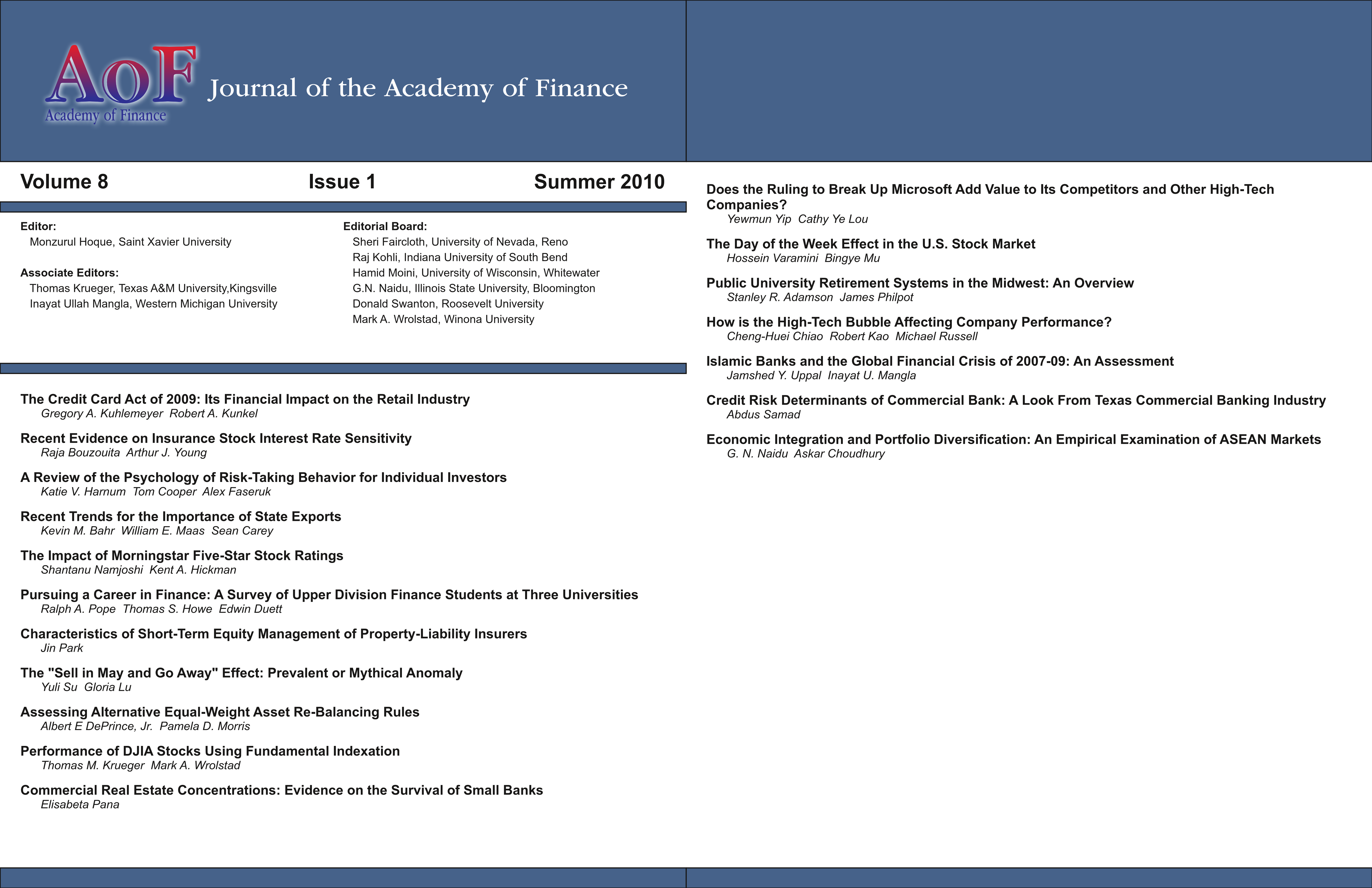How is the High-Tech Bubble Affecting Company Performance?
DOI:
https://doi.org/10.58886/jfi.v8i1.2351Abstract
This study analyzes key financial ratios’ variations and helps us understand company financial performance on both high-tech and non-high-tech companies before and after the impact of the high-tech bubble. The composite index of the ranked profitability, assets utilization, liquidity, debt utilization, price to earnings, and market to book value are generated by company level first. The price ratios of high-tech and non-high tech companies are evaluated by a non-linear regression method for the periods before and after the bubble. The outcomes of various ratios are tested by statistical significance for each industry in these time periods. The results show that the high-tech companies have reached a higher efficiency level and the nonhigh-tech companies have suffered relatively more on profitability level after the high-tech bubble. A significantly lowered return on equity indicates that the high-tech companies have reduced their product unit cost and profit margins. As for the effect of the size of the company, the large high-tech companies have weakened the profit gaining power, but the small high-tech companies have remained profitable after the effect.





